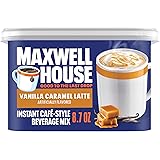How Drip Coffee Machines Work: An In-Depth Look
Globally, consumers brew billions of coffee cups annually. A vast majority utilize **drip coffee machines**. These ubiquitous appliances underpin daily routines. Understanding their sophisticated engineering offers new appreciation. The video above provides an excellent overview. We delve deeper into the intricate mechanics here. This exploration covers each critical component. It also expands on essential brewing science.
The Journey of Water: From Reservoir to Showerhead
The process begins with the reservoir. Fresh, cold water fills this compartment. Gravity pulls water downward. It flows into a precisely designed tube. This tube is typically aluminum. Its narrow gauge is crucial. This design optimizes the machine’s thermal efficiency.
A crucial component follows. The one-way valve guides water flow. This valve is often a simple check valve. It prevents backflow effectively. This ensures water moves in only one direction. It maintains system pressure during the brewing cycle.
Next, the water reaches the pump. Or, in simpler **drip coffee machines**, it enters a specific heating section. Here, precise water leveling occurs. This guarantees consistent brewing volumes. The water’s path is carefully engineered.
Mastering Temperature: The Heating Element’s Role
A powerful heating element drives the entire system. This resistive heater coil is essential. It performs dual functions. First, it heats the brew water. This is vital for proper extraction. Second, it keeps the warming plate hot. This plate maintains brewed coffee temperature. Both tasks are critical. They define the overall coffee experience.
The heating element contains a coil. An electric current passes through it. This generates significant heat. The element is usually an aluminum casting. It holds the heating tube and the warming plate. This integrated design is highly efficient. It ensures optimal heat transfer.
Temperature control is paramount. A thermistor or bimetallic switch regulates it. This sensor monitors the element’s temperature. It cycles power to the heater. This ensures a stable temperature range. Precise thermal regulation is vital. It prevents overheating and inconsistent brewing. Optimal brewing temperatures typically range from 195°F to 205°F (90°C to 96°C). Fluctuations impact extraction significantly.
The Physics of Percolation: Driving Water Upward
The heated tubing causes water to boil. This generates steam bubbles. These bubbles expand rapidly. They rise through the narrow tube. This principle is called a “thermal siphon.” It’s a fundamental aspect of **drip coffee machines**.
The rising bubbles displace water. They force small drops upward. The one-way valve directs this flow. It prevents water from returning down. This creates a pulsating upward motion. Water reaches the showerhead eventually.
This “percolation” relies on fluid dynamics. The bubbles act as miniature pistons. They push water against gravity. It’s a clever, simple mechanism. It ensures water reaches the grounds consistently. The system achieves effective water delivery.
Optimizing Extraction: From Grounds to Cup
The showerhead distributes hot water. It sprays over the coffee grounds. Even saturation is critical here. An uneven wetting leads to poor extraction. Some grounds become over-extracted. Others remain under-extracted. The ideal bloom phase starts here.
Water then saturates the grounds. It dissolves soluble compounds. These include acids, sugars, and oils. The water filters through the ground coffee bed. It picks up the coffee’s essence. This liquid becomes the brewed coffee.
The paper filter plays a key role. It separates spent grounds from liquid. It also traps fine particles and some oils. A cleaner cup profile results. Different filter types affect taste. Permanent filters allow more oils through. This yields a fuller-bodied brew. The filtered coffee drips into the carafe. A freshly brewed pot is now ready.
Beyond the Basics: Advanced Drip Coffee Machine Design
Modern **drip coffee machines** offer enhancements. Some feature bloom cycles. These pre-wet grounds briefly. This releases CO2, improving extraction. Other models include programmable timers. Users wake to fresh coffee. Integrated grinders are also common. They provide maximum freshness.
Water filtration systems are sometimes included. These remove impurities from tap water. Chlorine and sediment affect coffee taste. Filtered water yields a cleaner brew. Higher-end models may boast precise temperature control. PID controllers maintain exact temperatures. This ensures repeatable, high-quality brewing. These innovations refine the user experience.
Maintaining Your Drip Coffee Machine
Understanding the internal mechanisms aids maintenance. Regular descaling is crucial. Mineral deposits accumulate over time. These impede the heating element. They can clog the narrow tubes. Descaling solutions remove these deposits. This maintains efficient operation.
Clean the showerhead often. Coffee oils can build up. This affects water distribution. Proper cleaning ensures even wetting. Always use fresh, cold water. Filtered water extends machine lifespan. It also improves coffee flavor significantly. Diligent care prolongs your machine’s life. It ensures consistently excellent coffee. This makes you a proud owner of a high-performing **drip coffee machine**.







